All dogs have special talents that make them well-suited for different activities or jobs.
Some are good at agility, others are great at finding things with their nose, and some are just awesome for keeping your lap warm!
But there are also a couple of dog breeds that excel at livestock protection, making them excellent assets for your farm or homestead.
Below, we’ll discuss some of the best breeds for protecting your goats, sheep, chickens, or whatever other animals you raise.
We’ll also answer some common questions about livestock guardian dogs to make sure they fit in well on your farm!
How Do Livestock Guardian Dogs Protect Your Animals?
Domestic livestock, such as sheep and goats, are vulnerable to attacks by various wild predators. But livestock guardian dogs, commonly referred to as LGDs, can help protect your animals and reduce the risk of predation.
LGDs have been used all around the world for centuries to fend off predators and protect various farm animals. They typically do so in three primary ways:
- Marking Their Territory — Dogs naturally use their scent to mark their territory. Wolves, coyotes, and other species can recognize these boundaries and are less likely to attack upon discovering these markings.
- Disruption — Livestock guardian dogs can bark or engage in other activities to deter potential predators from coming too close to livestock.
- Confrontation — In the event that a predator does enter your farm, an LGD can physically confront the predator making it more likely to leave the premises.
Common Characteristics of Livestock Guardian Dogs
There are a couple of characteristics livestock guardian dogs have in common.
Here are some of the traits that make these breeds well-suited for protecting your farm.
- Most are large, strong dogs.
- They are typically comfortable living outdoors (although they should still be provided with a dog house or shelter).
- They usually bonded strongly with livestock from an early age.
- They typically have a peaceful demeanor unless provoked by predators.
- They often mark their territory very deliberately.
- Most love to work and need a job to stay properly occupied.
- They are usually loud, vocal dogs who won’t hesitate to bark at potential dangers.
- They have great senses of smell, sight, and hearing, which enables them to notice predators from a distance.
- Some have extremely fluffy coats, which may help facilitate the dog-livestock bonding process.
Best Livestock Guardian Dogs
There are a bunch of different livestock guardian breeds you can choose from, but the following ones are some of the most popular. Just be sure to think carefully about the characteristics of each breed before making your choice.
1. Anatolian Shepherd
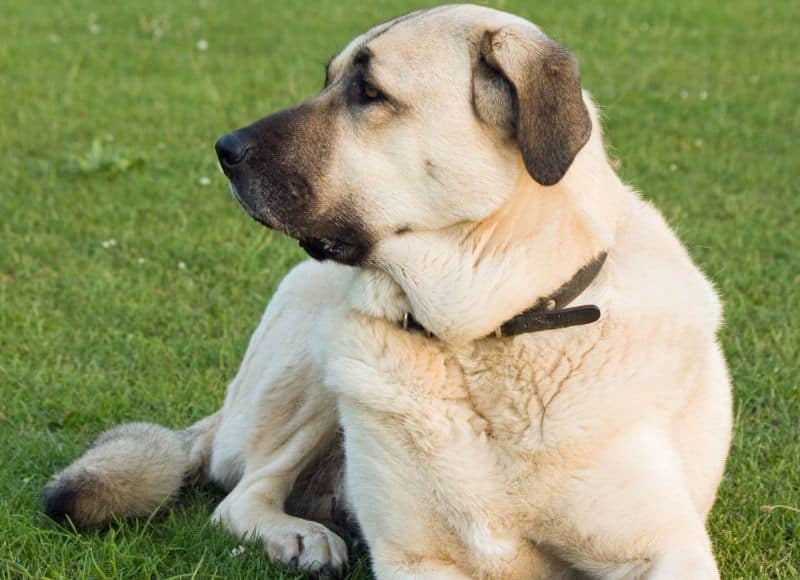
Anatolian shepherds originated in Turkey and are known for being very strong and rugged.
The breed is known for having good sight and hearing which makes them the perfect livestock guardian dogs. They live pretty long lives, occasionally reaching 13 to 15 years of age, and they usually weigh somewhere between 90 and 150 pounds.
These dogs require an owner who is capable of handling an assertive, strong-willed dog. While Anatolian shepherds are generally calm and loving, they require proper training to ensure that they are effective protectors.
Note: There’s a bit of controversy about the Anatolian shepherd and the Kangal. They’re very similar dogs in many ways, which leads some authorities to consider them the same breed. Others, however, continue to consider them distinct entities. We’re listing them separately (see below) because it gives us the chance to share an extra photo of these adorable doggos.
2. Kangal
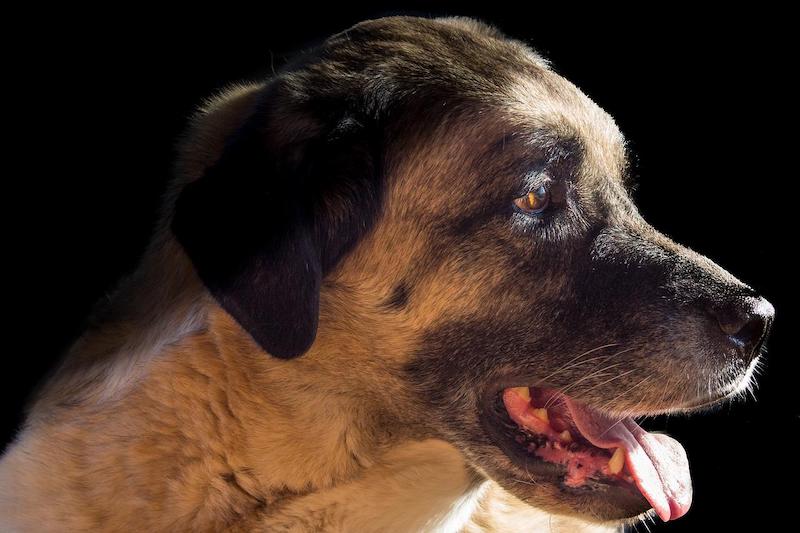
Assuming that you consider the breed distinct from the Anatolian shepherd, the Kangal is a super protective, alert, and independent dog, which is well-suited for a life spent protecting livestock.
They reach similar sizes and ages as Anatolian shepherds.
3. Great Pyrenees
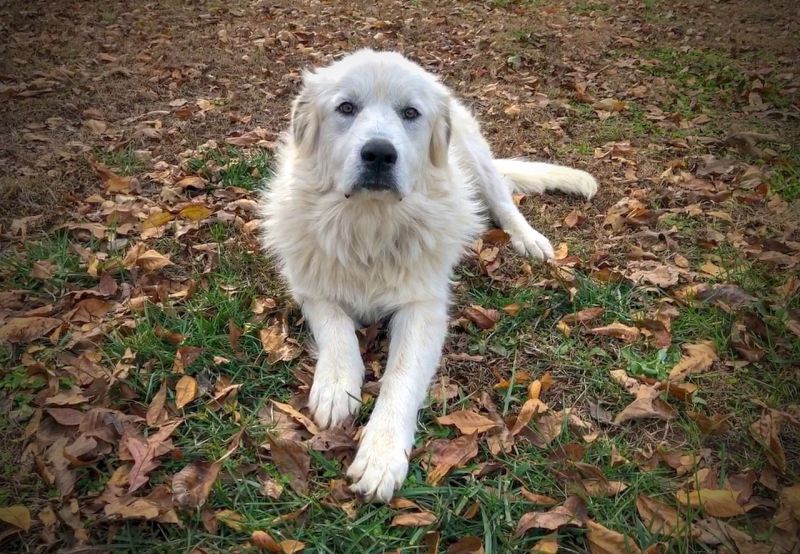
The ultra-fluffy Great Pyrenees is known for his gorgeous white coat, confidence, and fearless attitude, making the breed an excellent choice for livestock-protection work.
They are usually a breed that is happy living outdoors, although they’re best suited for cooler climates given their thick coats.
When unprovoked by predators, these big white dogs are calm, gentle, and zen-like making them great for families with children. But, when predators approach, they become fearless and formidable defenders of their flock.
Great Pyrenees dogs live around 10 to 12 years and usually weigh between 80 and 120 pounds.
4. Komondor
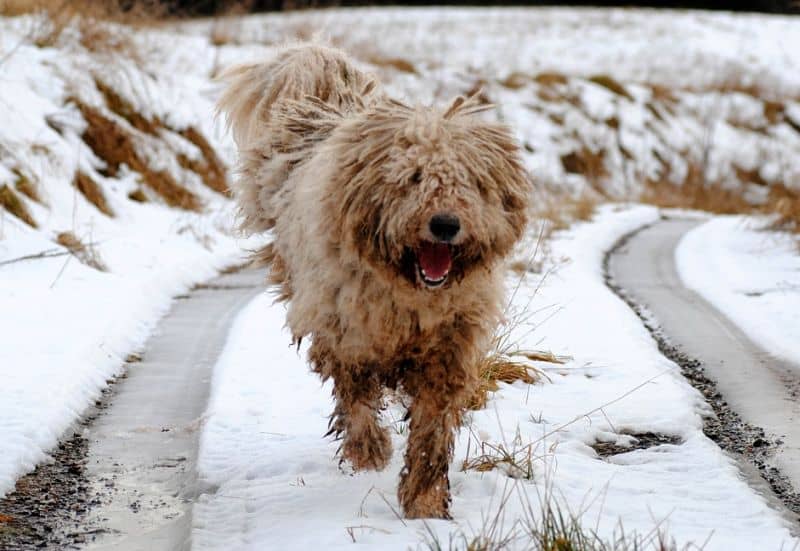
These shaggy sheepdogs hail from Hungary and are commonly referred to as “mop dogs” due to their dreadlock-like appearance. Don’t be fooled by their distinctive tendrils though — this breed is known for being especially strong with dense bones and lots of muscle under all those dreadlocks!
These dogs are independent and steady, making them well-suited for livestock-guarding work. But this also makes them a bit challenging for first-time owners; they’re best left to those with a lot of dog-care experience.
Komondors live between 10 and 12 years and weigh about 90 to 130 pounds.
5. Tibetan Mastiff
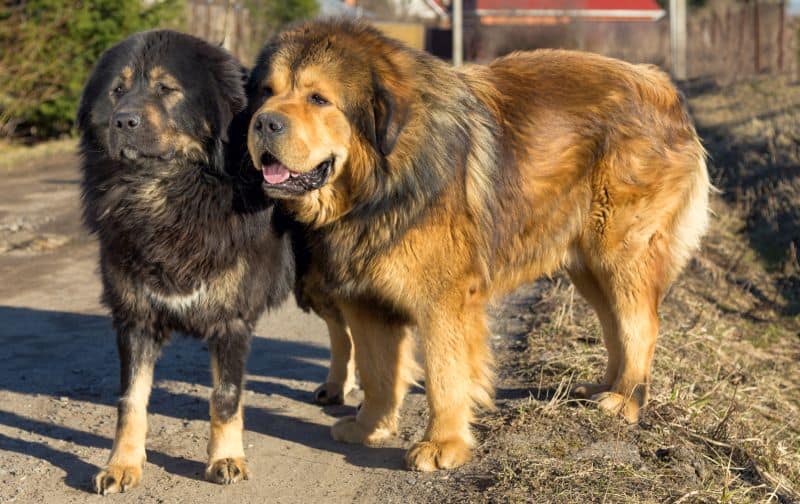
These huge, fluffy dogs are protective and tenacious making them excellent livestock guardian dogs. An ancient breed, the Tibetan mastiff was used by nomadic tribes of Nepal and Mongolia to protect property and livestock. These huge helpers weigh anywhere between 80 and 160 pounds, and they usually live for 12 to 15 years.
While they are gentle and mellow around the house, they can be pretty territorial so make sure that these dogs are properly socialized with strangers and young kids.
6. Kuvasz
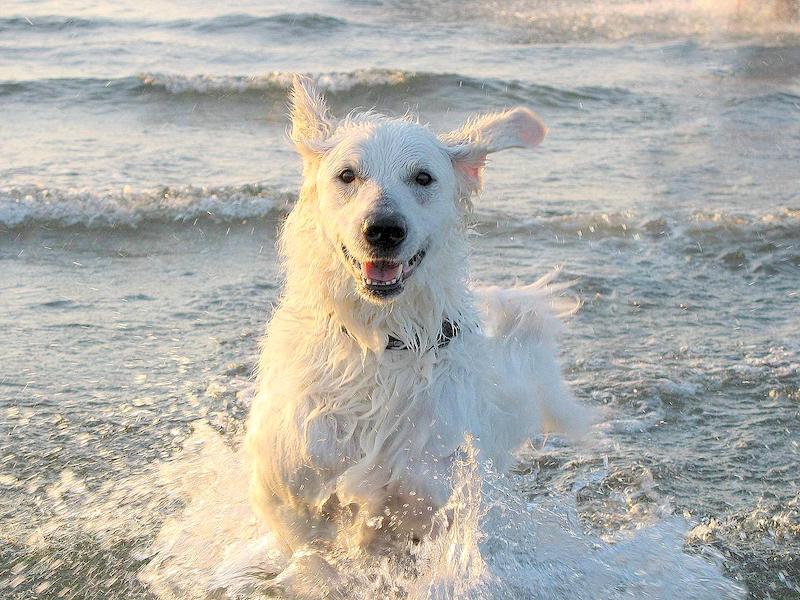
The Kuvasz is a Hungarian dog breed who is extremely intelligent and loyal. This, in combination with their large size and brave disposition makes them great livestock protectors. However, in recent years, many people have begun keeping these dogs as family pets.
This large, white breed usually lives for 10 to 12 years and weighs between 80 to 110 pounds.
7. Pyrenean Mastiff
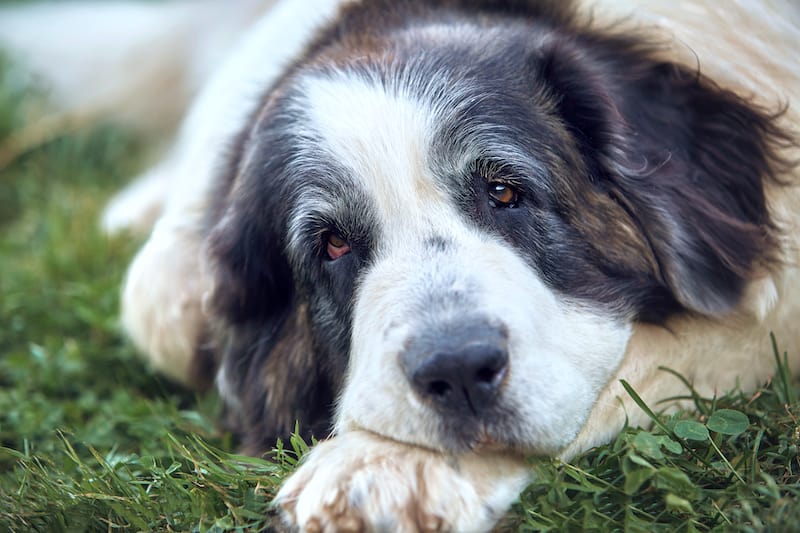
These sweet, intelligent dogs are huge and generally very gentle with humans and other dogs. They are great at protecting flocks, and their independent nature makes them excellent LGDs, as they often excel at making decisions and solving problems without human help.
The large breed usually lives anywhere from ten to thirteen years and weighs anywhere from 120-240 pounds.
The Pyrenean mastiff generally does well around children and will only feel the need to protect when provoked by a predator.
8. Akbash

The sweet-faced akbash is originally from Turkey and has been used as a livestock guardian dog for centuries. Their name comes from the Turkish work akbas, which means “white head.”
The breed’s independent and brave nature makes them great protectors for livestock and families, and they often work well with a variety of different livestock species. The akbash lives about 10 years and weighs anywhere from 90 to 140 pounds.
9. Polish Tatra Sheepdog
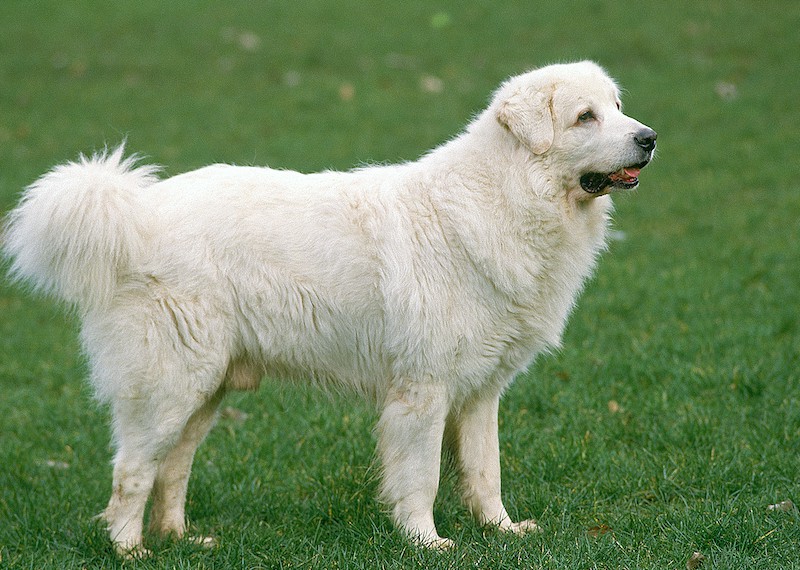
Polish Tatra sheepdogs were initially developed to protect livestock of farmers living in the Tatra Mountains of southern Poland. Many years later, they still make excellent LGDs, thanks in part to their loyal and hard-working nature.
The breed is known for being very gentle with families and children despite being incredibly independent. They typically live for 10 to 12 years and weigh anywhere between 80 and 130 pounds.
10. Maremma Sheepdog
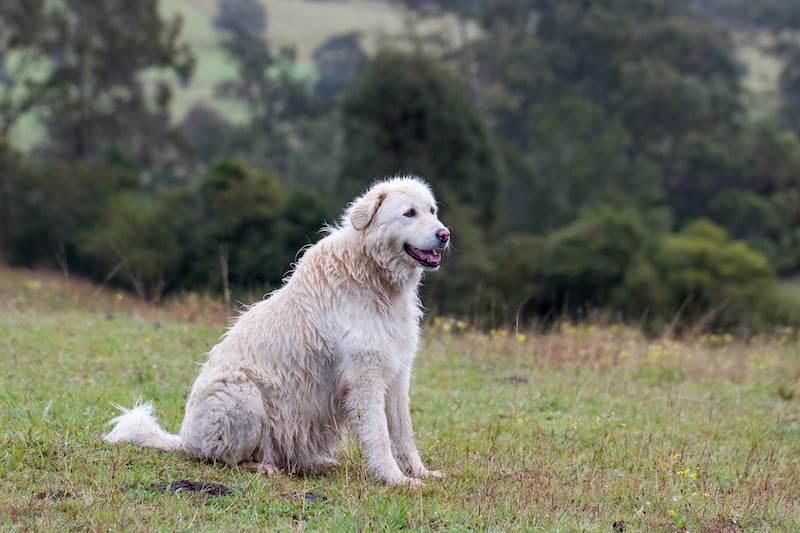
This Italian sheepdog is known for its alert instincts and loyal attitude, making the breed an excellent choice for livestock guardian dogs. In fact, this is another LGD breed that is well-suited for guarding a variety of different farm animals, ranging from sheep to chicken to ducks.
Maremma Sheepdogs are a bit smaller than other livestock guardian dogs, with an average weight of 77 to 99 pounds. They are typically one of the best LGDs with children, and they usually live for about 13 years.
11. Spanish Mastiff
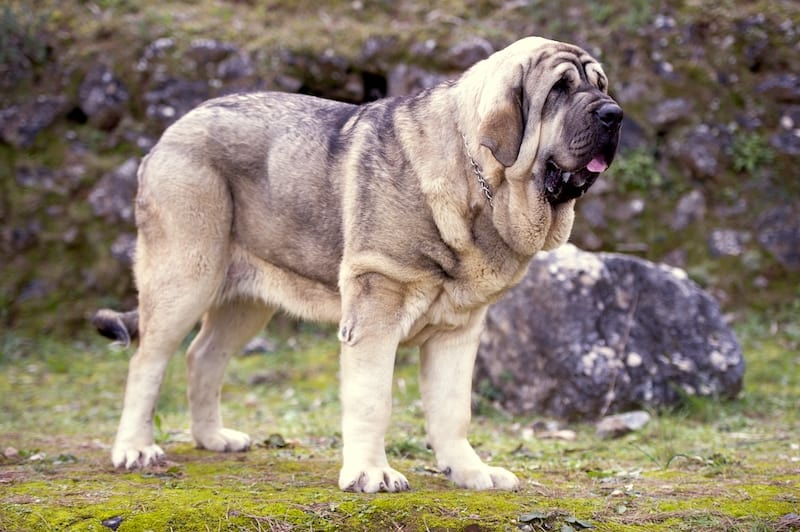
The Spanish mastiff is a huge breed that is known for its kind and intelligent nature.
These dogs have a deep, low bark and alert sensibilities that make them excellent livestock guardian breeds. Spanish mastiffs also posses a muscular, strong build making them intimidating to potential predators.
It’s imperative that these dogs are properly trained from a young age due to their sheer size. Even if a mastiff is innocently playing around, his large weight could easily injure a small child if he is not properly trained.
They usually weigh anywhere from 140 to 200 pounds and live an estimated 10 to 12 years.
12. Karakachan
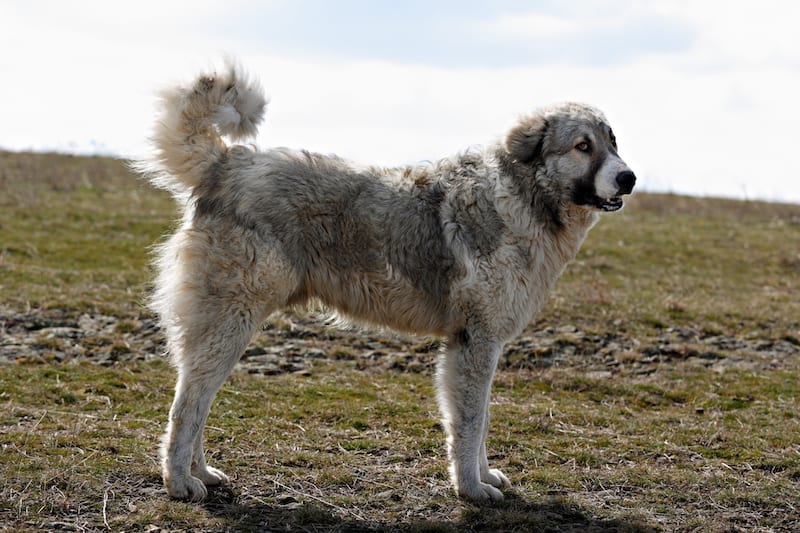
The Karakachan is a vigilant, independent dog breed, who is well-suited for protecting livestock. They are extremely alert and known for their acute senses. They bond strongly with their flock and will not hesitate to defend them from threats.
The breed usually weighs between 70 to 120 pounds and has an average life expectancy of 12 to 14 years.
However, it is important to note that this breed is very sexually dimorphic, as males reach much larger sizes than their female counterparts.
Things to Think About Before Getting a Livestock Guardian Dog
Before committing to raising a livestock guardian dog, there are a couple of important factors to take into consideration.
- Livestock guardian dogs can be very vocal. Livestock guardian dogs are often quick to bark, howl, growl, and emit other vocalizations. These are one of their methods for deterring potential predators. However, they may not be the best pick for your farm if you’re in close proximity to neighbors.
- Livestock guardian dogs are not ideal for novice owners. LGDs are generally best for experienced owners since they require different training than typical dogs. Moreover, they might be initially more difficult to handle due to their large size, intelligence, and headstrong nature.
- Livestock guardian dogs get bored easily. These dogs are working dogs so they’ll need a constant job to stay occupied. LGDs that aren’t properly stimulated may be inclined to chew on household belongings or get into other mischief out of boredom.
- Livestock guardian dogs must be properly socialized. It’s imperative that your livestock guardian dog is properly socialized with both the herd and the members of your family from a young age. Neglecting this important task could cause your LGD to perceive something or someone as a threat by mistake.
- Livestock guardian dogs can present safety risks. Without proper socialization and training, livestock guardian dogs could potentially be dangerous. Their sheer size and strength mean that they can cause serious injuries to people or other animals. And this even extends to playtime — these wonderful giants may inadvertently injure small people or children during routine play.
Livestock Guardian Dog FAQs
Below, we’ll answer some of the most common questions concerns livestock guardian dogs to help you determine whether or not they are a good pick for your farm.
Do livestock guardian dogs need to be trained?
Absolutely. While livestock guardians (LGDs) are likely to have some innate livestock protection sensibilities, they still require an extensive amount of training to properly understand and execute their jobs.
However, compared to other dogs, they may not need to be specifically trained to not kill chickens – that may come naturally to them.
Livestock guardian dogs begin their training as early as 8 to 16 weeks of age. This is when they should be placed with the flock they’ll be required to protect.
Should I get a male or female livestock guardian dog?
Either sex can work as an effective livestock guardian dogs.
Generally, males will roam the perimeter of the farm or enclosure more while females will stay closer to the flock. Males will often grow larger than their female counterparts, which can represent a “pro” or a “con,” depending on your needs.
Ultimately, it comes down to a matter of personal preference.
How many livestock guardian dogs do I need?
The number of LGDs will vary greatly on the size of your farm, protection needs, and age of the dogs.
Recommendations vary wildly, so trial-and-error is often required to figure out the best number of LGDs for your farm. Some farmers utilize one LGD for every 30 to 50 sheep, while others recommend using two or three times as many.
If you plan on adding another LGD, it’s recommended that you wait until you have a mature, grown LGD. Puppy livestock guardian dogs can learn well with a mature adult in their presence.
In addition, having more than one LGD puppy at a time can be trying, even for the most experienced dog owners.
Are livestock guardian dogs good with kids?
Livestock guardian dogs should be properly socialized with all members of your family, including kids, to ensure that they do not perceive anyone as a potential threat.
However, it’s important to understand that these working dogs do not always make good companion pets. In order to stay focused on their job, LGDs need to have their lives centered around protecting the farm.
Do livestock guardian dogs need protective clothing?
Generally speaking, no.
Most LGDs have thick double coats, which help protect them from predators and the elements. Some even have mane-like fur to protect their neck and shoulder region from the teeth of predators.
Additionally, livestock guardian dogs work to deter predators in a number of ways before engaging in any physical confrontation. Moreover, these dogs are super strong and robust on their own.
Nevertheless, some farmers and homesteaders feel better when providing their dogs with protective garments. There is certainly no reason you can’t do so if you wish.
Do livestock guardian dogs need to be groomed?
Yes! It’s recommended that long-haired livestock guardian dogs are properly groomed at least once per month to keep their coat as healthy as possible.
Minimally, you’ll want to address and remove any mats present before they become problematic. Additionally, unkempt dogs develop bad odors, so you’ll want to make sure to bathe your LGDregularly.
***
Having a livestock guardian breed can be a great way to protect your small farm or homestead. These dogs are happy to help protect your farm and flocks and enjoy working on a daily basis.
Do you have experience with any of these livestock guardian breeds? What’s the best part about having them as a part of your farm? We’d love to hear all about it in the comments below!
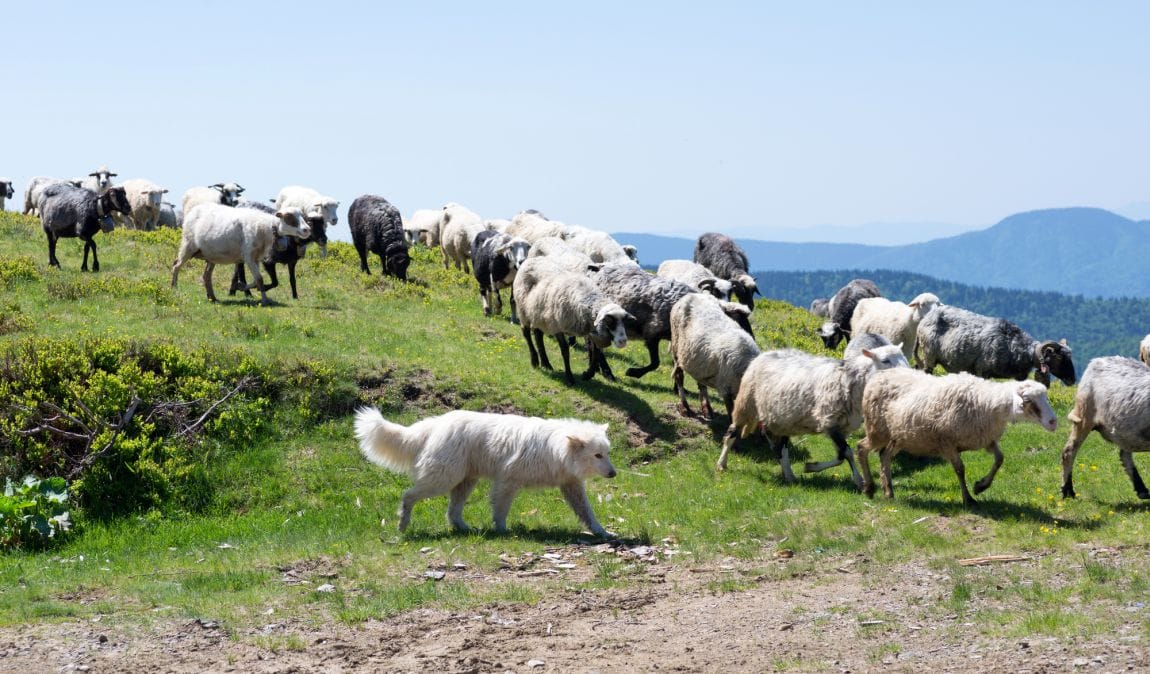
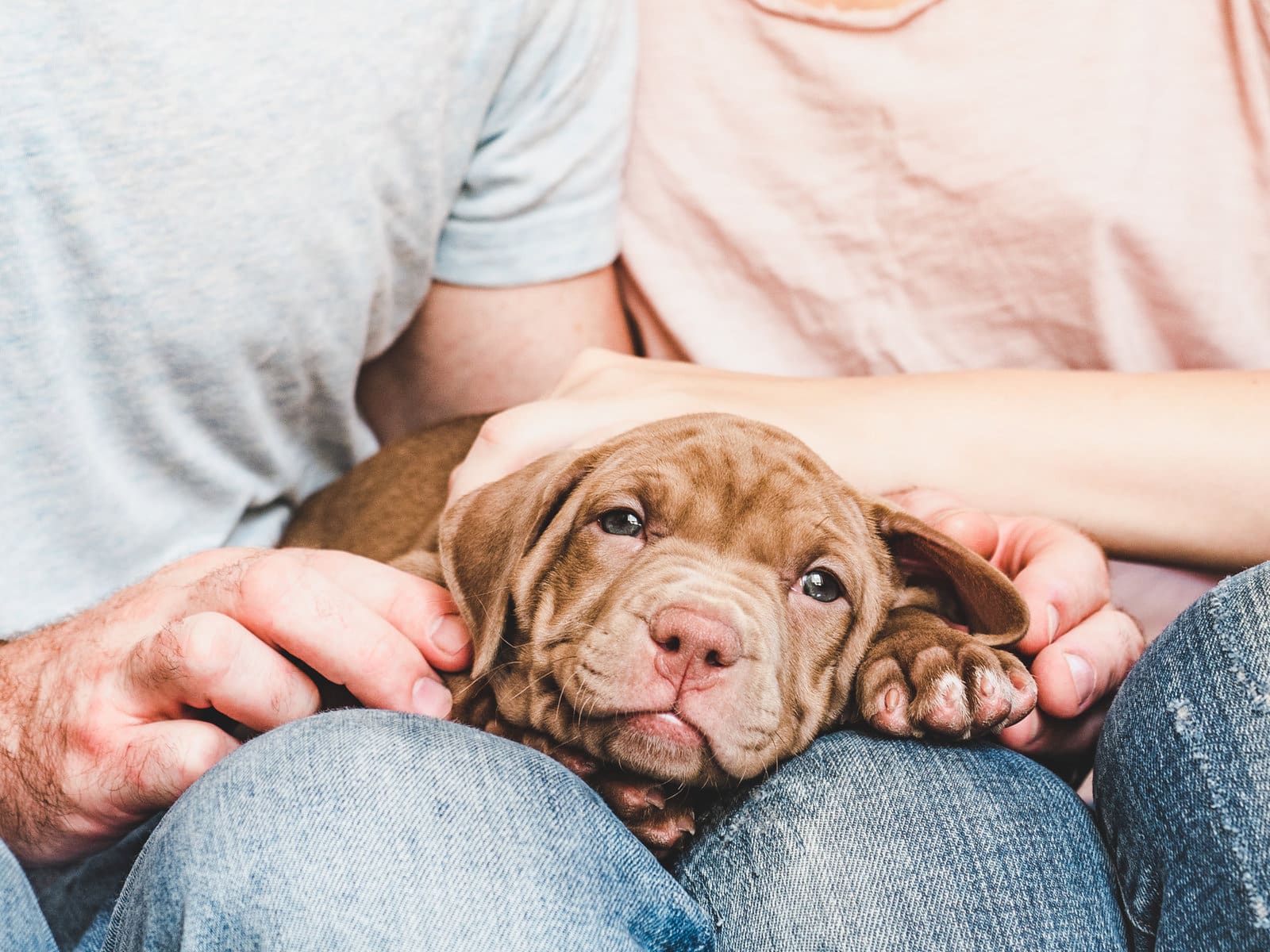
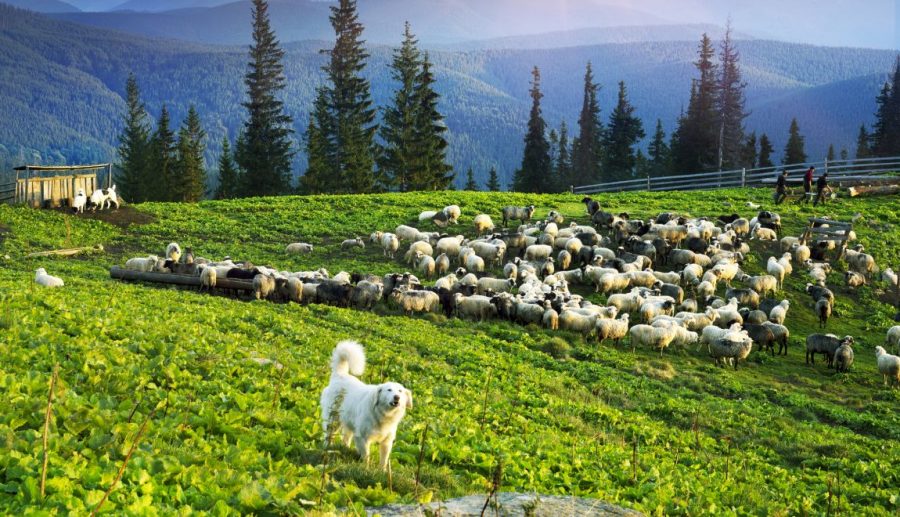




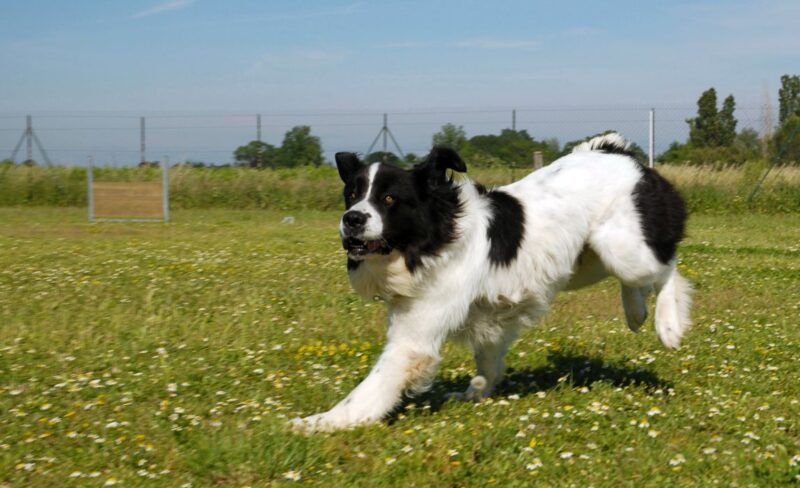
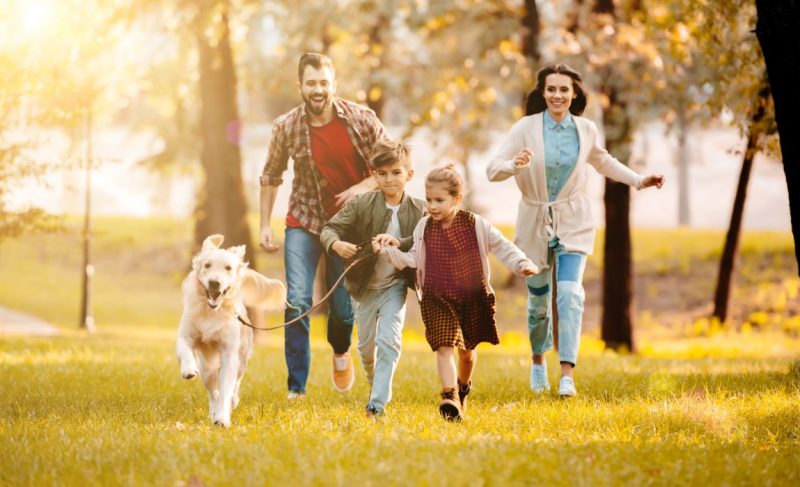
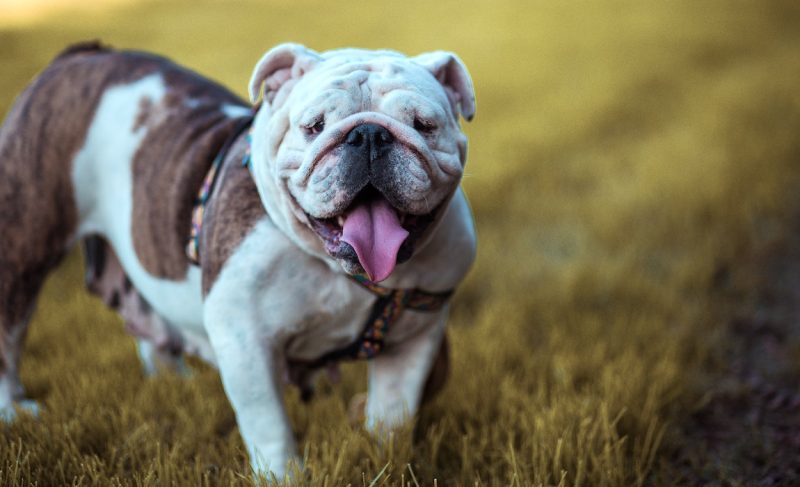
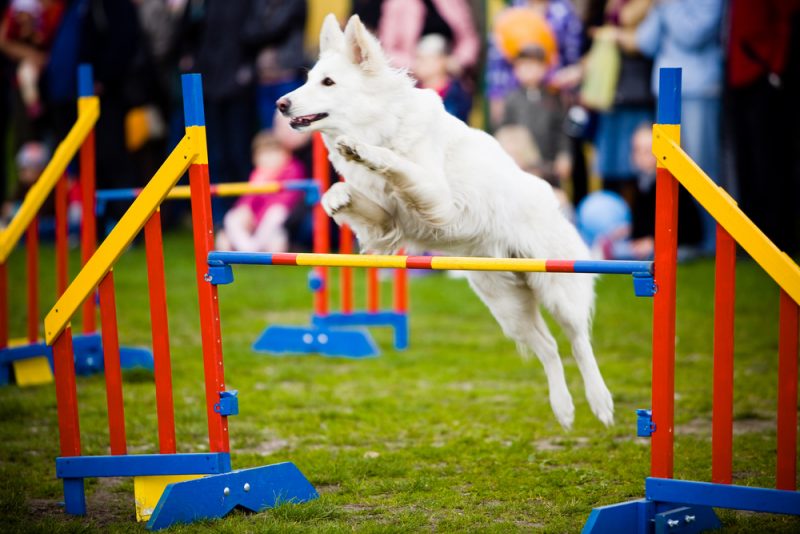
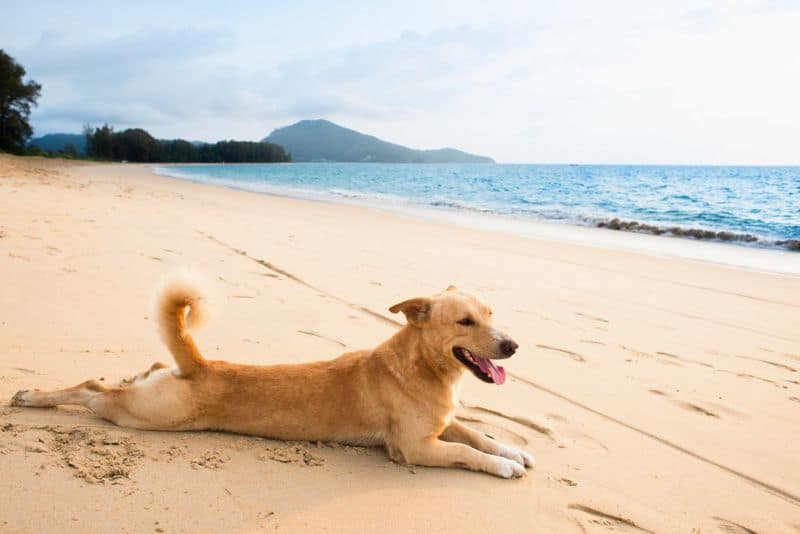

Leave a Comment